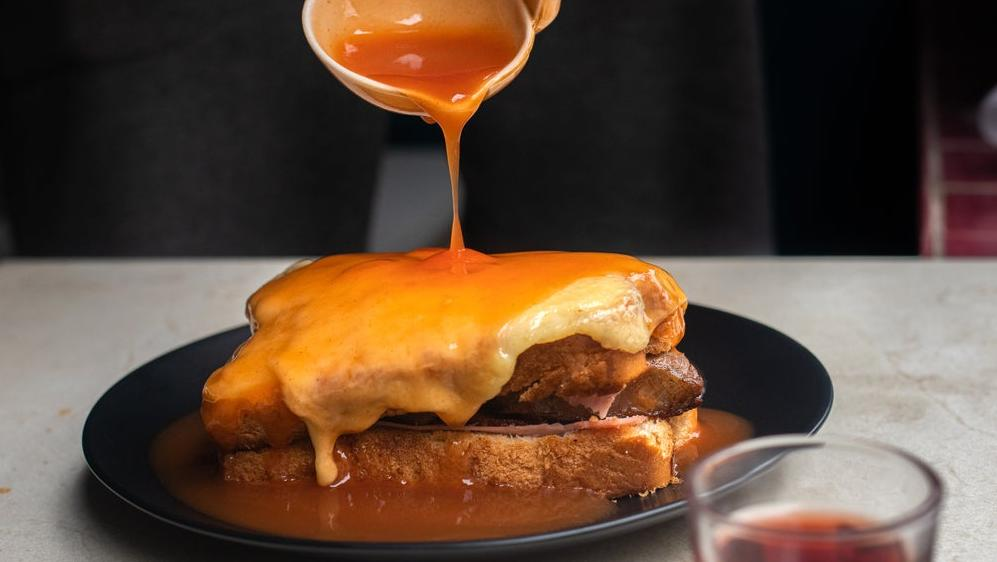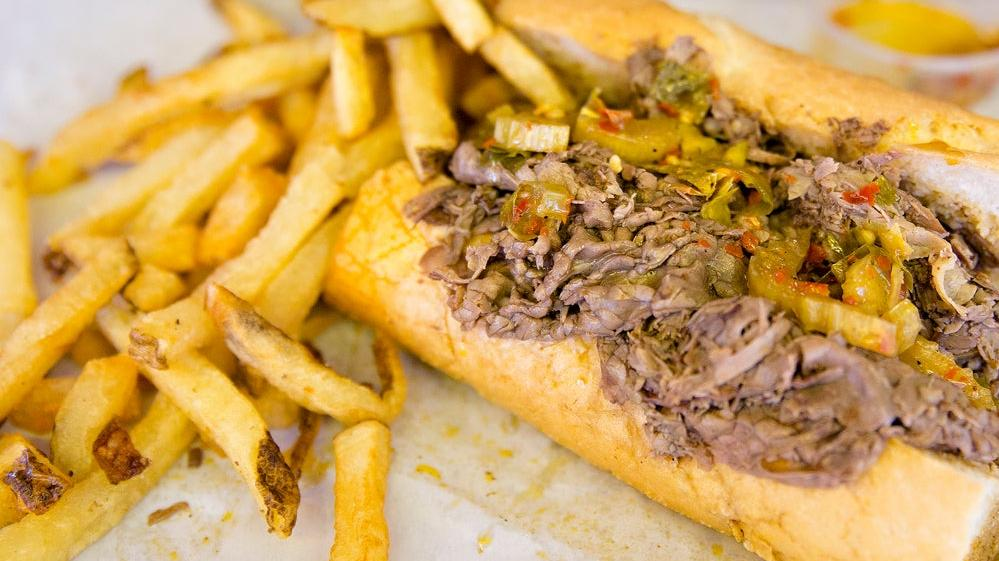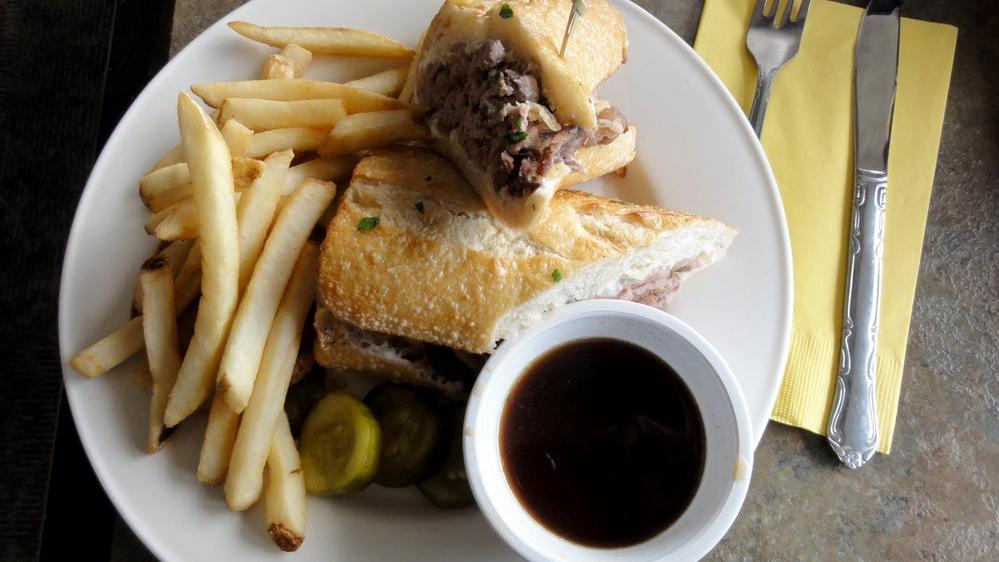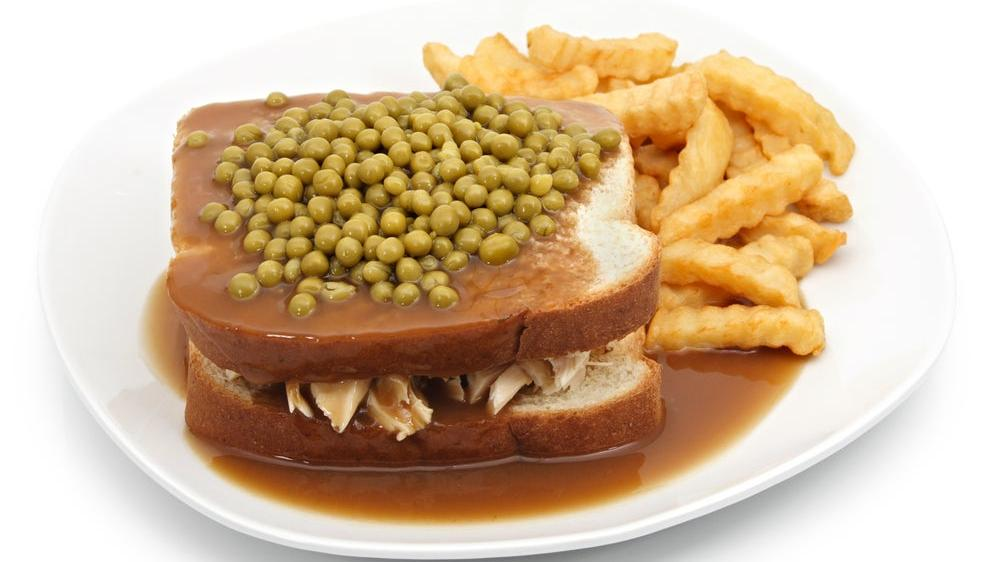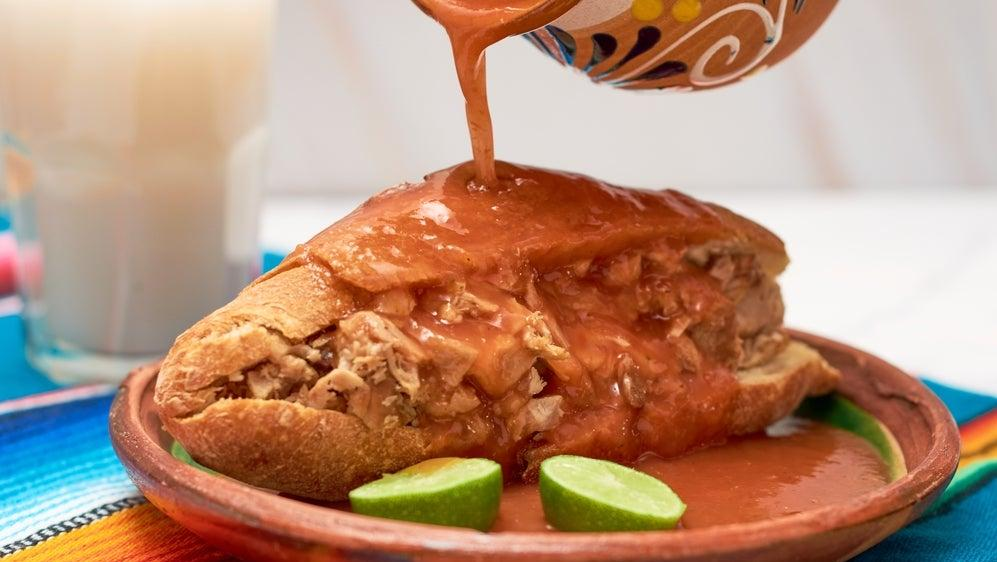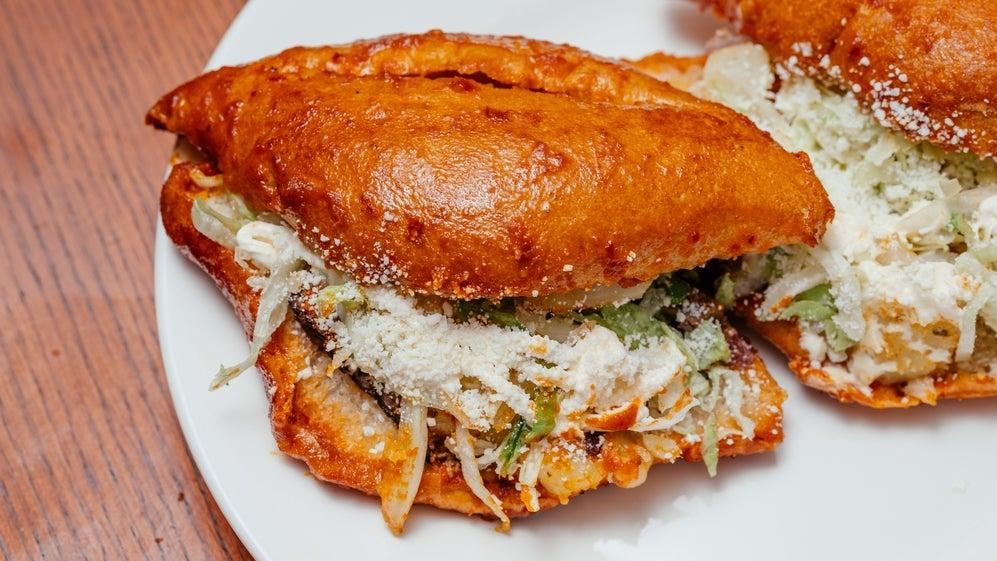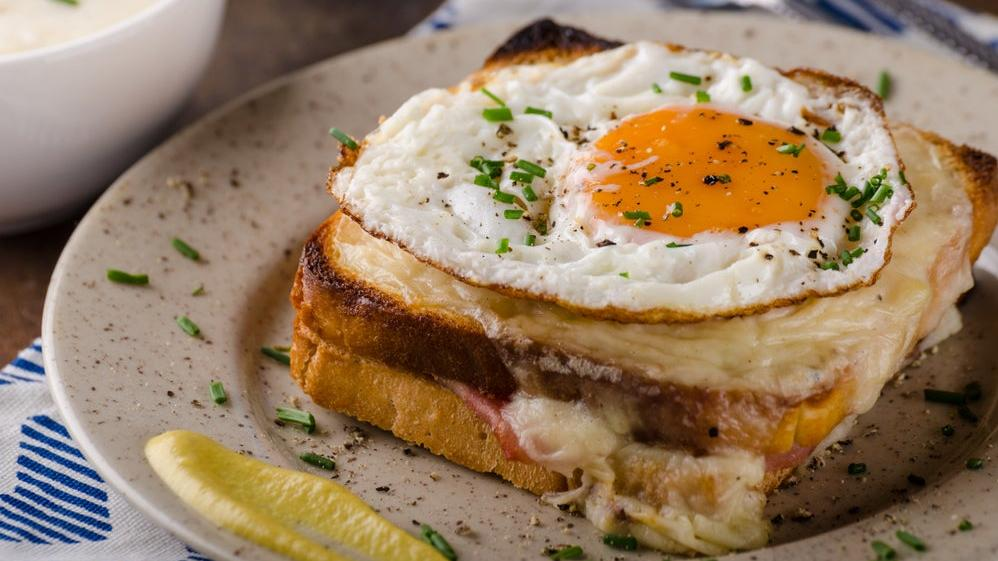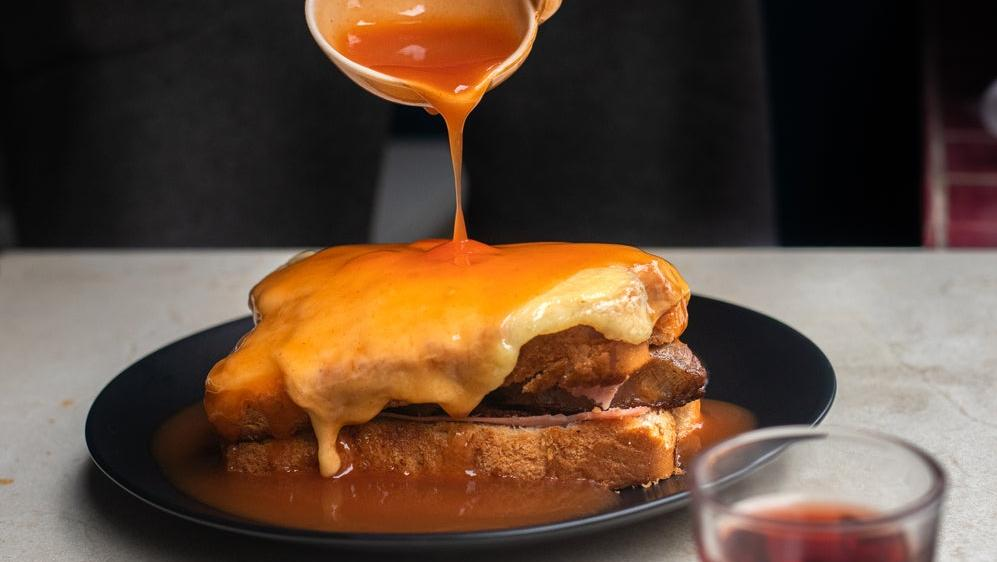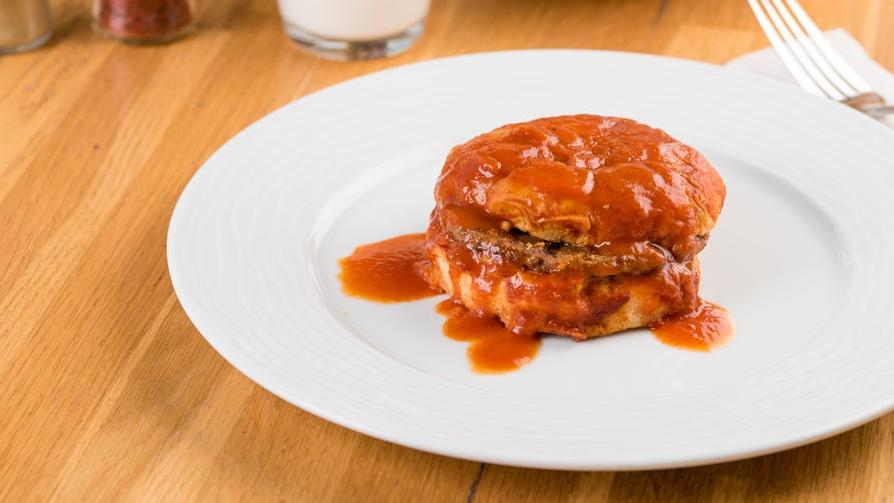8 Soggy Sandwiches As Wet As The Bear's Italian Beef
Let’s take a deep dive into the world of dripping wet sandwiches.
If The Bear taught us anything—besides what a French brigade system is, the name of the Cubs' first baseman, and that our new sexual fantasy involves Joel McHale telling us how worthless we are while we sweatily murmur "Yes, chef" and chop onions—it's how an Italian beef is served. For many of us non-Chicagoans, the show was our first introduction to the sandwich and its unique nomenclature: you can get it dry, wet or, the aficionado's choice, dipped into its own braising liquid.
That third option might seem counterintuitive. After all, didn't the Earl of Sandwich himself intend his invention to be the ultimate handheld, portable meal, a purpose it's unable to fulfill if the bread is drenched to the point of disintegration? Yet whether covered in gravy or salsa, eaten in Chicago or across the pond, there's no denying the perverse pleasures of a soggy sandwich. Grab a handful of napkins and take a dip into this exhaustive guide.
Italian beef
Place of origin: Chicago
Moistening agent: Beef jus
As documented on this very website, the beef in an Italian beef is roasted, sliced, and simmered in its own cooking liquid. It's then plopped onto a French roll with roasted bell peppers (order it "sweet") and/or the spicy mixed pickle known as giardiniera (order it "hot").
Get it "dipped," and either the bread or the entire sandwich will be submerged in the beefy broth before serving. You won't be able to avoid jus-covered hands, but you can avoid staining your clothes by adopting a pose known as the "Chicago Lean" or "Italian Stance": body hunched forward, elbows on the counter, chowing down at a 45-degree angle.
French dip
Place of origin: Los Angeles
Moistening agent: Beef jus
In its most basic form, this is roast beef on a French roll with hot mustard and, optionally, cheese. What happens next depends on where you are. Most restaurants that serve French dip will give you a bowl of jus for DIY dunking as popularized by Cole's, one of the two downtown LA restaurants that claim to have invented the sandwich. True-blue Angelenos prefer rival Philippe's, where the bread is given a quick pass through the beef juice right before assembly and you can round your meal out with a pickled pig's foot. Either way, the result is easier to eat than its Chicago analogue, if still pretty messy for a city whose other signature dish is the Cobb salad.
Hot chicken
Place of origin: Quebec, Canada
Moistening agent: Chicken gravy
While Nashville hot chicken is punishingly spicy, Canadian hot chicken is pure bland comfort. It's simply shredded cooked chicken—a leftover rotisserie bird will do nicely—between slices of buttered white sandwich bread, all smothered in the mixture of thick gravy and frozen peas the Québécois call galvaude. Don't even try to eat this one with your hands: it's knife-and-fork only, although you're allowed to scoop up the excess gravy with the fries that traditionally accompany the sandwich. (Take away the bread and the whole thing becomes poutine.)
Torta ahogada
Place of origin: Guadalajara, Mexico
Moistening agent: Chile and tomato sauce
Legend has it this "drowned" delicacy was invented when a Guadalajara street vendor accidentally dropped a pork sandwich in a vat of salsa. Carnitas remain the traditional filling, but you can use beef, shrimp, cheese, or anything else as long as you put it on a birote, a crusty sourdough roll that absorbs the double coating of chile de arbol and tomato-garlic sauce without losing its integrity. And yes, you must eat this gloriously sloppy hangover cure with your hands. If you're lucky, your order will come with a pair of latex gloves.
Pambazo
Place of origin: Mexico City, Mexico
Moistening agent: Chile sauce
Superficially similar to the torta ahogada, the pambazo is in fact a completely different creation. While crusty bread is integral to the former, the latter must be made with the namesake pan basso, a soft roll that soaks up guajillo chile sauce like a sponge. The crust comes afterward, when it's fried in oil on the top and bottom. Filled with chorizo and potatoes and topped with shredded lettuce, cheese, and a drizzle of crema for good measure, it's the ideal end to a night of drinking—just eat it before it falls apart.
Croque madame
Place of origin: Paris, France
Moistening agent: Melted cheese, bechamel, egg yolk
The standard croque monsieur, with a demure layer of melted Gruyere or Comte that barely moistens the white bread below, is far too gentlemanly for this list. But his slovenly wife, topped with a runny fried or poached egg that oozes all over the ham and cheese filling, surely deserves a spot, especially if creamy bechamel sauce has entered the equation. Speaking of, bonus points to the sandwich for inspiring this perfect tweet:
Francesinha
Place of origin: Porto, Portugal
Moistening agent: Melted cheese, tomato-beer sauce, egg yolk (optional)
What happens when you try to recreate a croque monsieur in Portugal? You get a maximalist masterpiece filled with ham and steak and sausage, smothered in melted cheese and a piquant tomato gravy fortified with beer, port wine, and often bacon. An egg on top and fries on the side complete the arterial assault. Supposedly created as an homage to "spicy" French females, it was once considered too decadent to be consumed by actual women. Today, thankfully, the "little Frenchie" is enjoyed by eaters of all genders, though Porto residents warn against ordering more than two sandwiches a month (which, truthfully, still feels like a lot).
Islak burger
Place of origin: Istanbul, Turkey
Moistening agent: Tomato-garlic sauce, steam
Yes, we're counting burgers as sandwiches, because a) why wouldn't they be? Fight me bro, etc.; and b) this Turkish invention, whose name literally means "wet burger," is just too soggy to leave off this list. A garlicky beef patty is placed between soft buns and coated, inside and out, with an even-more-garlicky tomato sauce. Vendors on Istanbul's Taksim Square make the burgers in big batches, keeping them moist in a steam box (no word on whether the "steamed hams" meme has reached Turkey) until they're ordered, usually by late-night drinkers who gulp down two or three at a time.
